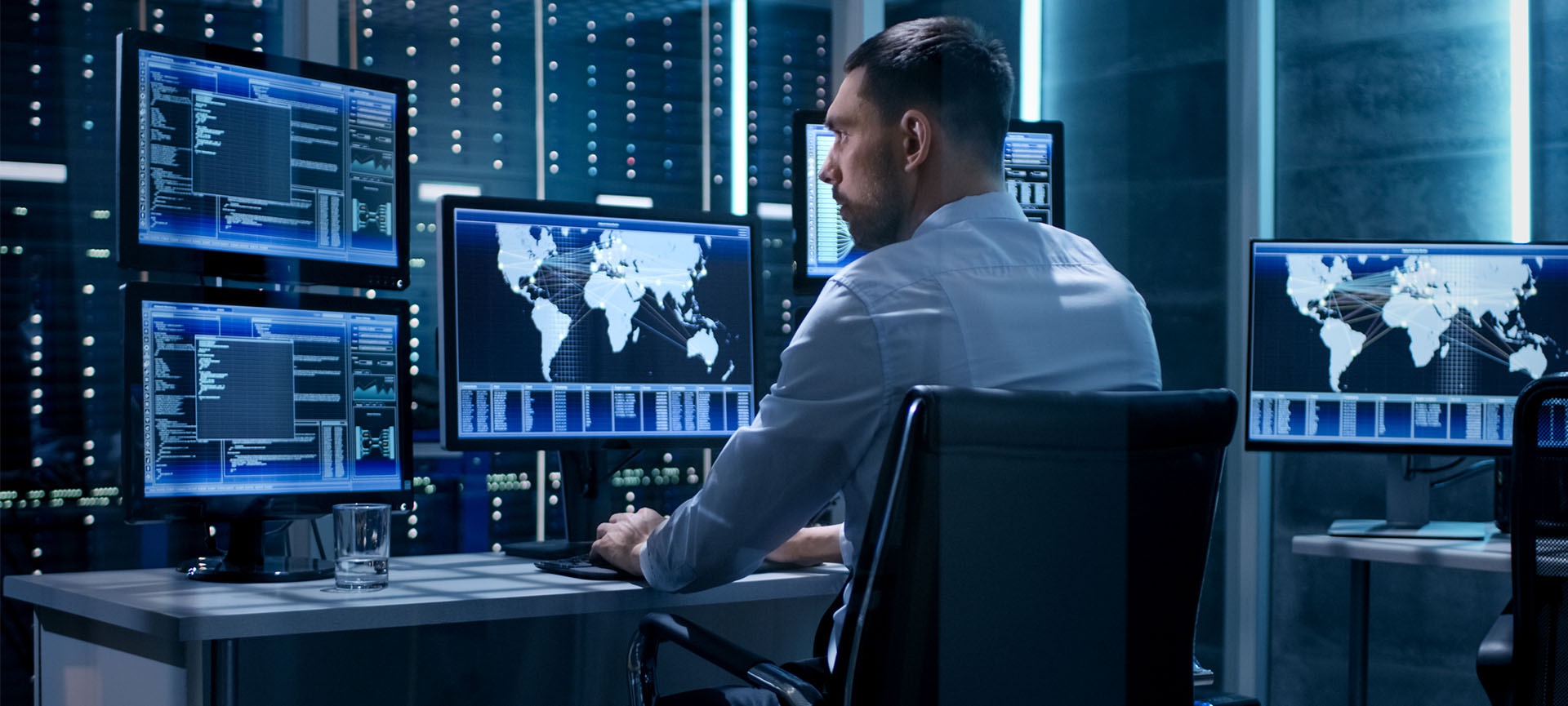Letting loose the Power of Corporate Security: A Comprehensive Overview
Wiki Article
From Cybersecurity to Physical Actions: Strengthening Company Safety in a Changing Globe
By incorporating the staminas of both cybersecurity and physical safety, firms can develop a thorough protection strategy that deals with the diverse range of threats they deal with. In this discussion, we will explore the changing threat landscape, the requirement to incorporate cybersecurity and physical safety, the application of multi-factor authentication steps, the value of worker understanding and training, and the adaptation of safety and security measures for remote labor forces. By taking a look at these essential areas, we will obtain useful insights right into exactly how organizations can reinforce their company protection in an ever-changing globe.Understanding the Transforming Hazard Landscape
The evolving nature of the modern-day world demands a detailed understanding of the altering risk landscape for reliable business protection. In today's interconnected and electronic age, hazards to business security have actually come to be a lot more intricate and innovative. As innovation advances and organizations become significantly reliant on digital facilities, the potential for cyberattacks, data violations, and other protection breaches has dramatically enhanced. It is critical for organizations to stay informed and adapt their safety measures to deal with these developing hazards.One secret element of understanding the transforming hazard landscape is recognizing the different sorts of threats that companies deal with. Cybercriminals are frequently establishing brand-new techniques to exploit vulnerabilities in computer systems and networks. These threats can range from malware and ransomware strikes to phishing frauds and social design tactics. Additionally, physical risks such as burglary, criminal damage, and company reconnaissance continue to be prevalent issues for services.
Tracking and assessing the risk landscape is vital in order to recognize prospective dangers and susceptabilities. This includes staying updated on the most recent cybersecurity trends, evaluating threat knowledge records, and carrying out routine risk analyses. By comprehending the changing threat landscape, companies can proactively carry out suitable security actions to alleviate dangers and shield their possessions, track record, and stakeholders.
Integrating Cybersecurity and Physical Safety
Incorporating cybersecurity and physical security is critical for thorough business defense in today's electronic and interconnected landscape. As organizations significantly rely upon technology and interconnected systems, the borders in between physical and cyber risks are coming to be blurred. To effectively secure against these dangers, a holistic technique that integrates both cybersecurity and physical security procedures is essential.Cybersecurity focuses on safeguarding electronic assets, such as systems, data, and networks, from unapproved gain access to, disruption, and burglary. Physical security, on the other hand, includes steps to safeguard physical properties, people, and facilities from susceptabilities and threats. By integrating these 2 domains, organizations can attend to susceptabilities and hazards from both digital and physical angles, consequently boosting their total safety and security pose.
The assimilation of these 2 techniques allows for a more detailed understanding of safety risks and allows a unified reaction to events. For instance, physical access controls can be enhanced by incorporating them with cybersecurity protocols, such as two-factor verification or biometric recognition. Cybersecurity procedures can be matched by physical safety actions, such as security electronic cameras, alarm systems, and protected access points.

Applying Multi-Factor Authentication Measures
As organizations significantly focus on thorough security actions, one efficient technique is the implementation of multi-factor verification actions. Multi-factor authentication (MFA) is a safety and security method that needs customers to provide several forms of recognition to access a system or application. This method adds an additional layer of check it out defense by combining something the individual recognizes, such as a password, with something they have, like a safety and security or a finger print token.By applying MFA, companies can significantly enhance their safety pose - corporate security. Typical password-based verification has its constraints, as passwords can be conveniently endangered or neglected. MFA minimizes these threats by including an additional authentication factor, making it harder for unapproved individuals to access to delicate information
There are several kinds of multi-factor authentication approaches readily available, including biometric verification, SMS-based verification codes, and hardware symbols. Organizations require to evaluate their specific needs and pick one of the most suitable MFA option for their requirements.
However, the execution of MFA should be very carefully planned and executed. It is critical to strike an equilibrium between security and use to avoid customer irritation and resistance. Organizations ought to also take into consideration prospective compatibility issues and supply sufficient training and assistance to guarantee a smooth transition.
Enhancing Staff Member Understanding and Training
To strengthen business safety and security, companies need to prioritize improving employee recognition and training. In today's rapidly advancing risk landscape, employees play a vital role in guarding an organization's delicate information and properties. Many safety violations occur due to human mistake or lack of understanding. Therefore, organizations require to purchase extensive training programs to inform their staff members about prospective threats and the best methods for minimizing them.Efficient worker recognition and training programs ought to cover a wide variety of subjects, consisting of information protection, phishing strikes, social design, password hygiene, and physical safety measures. These programs ought to be tailored to the particular requirements and duties of various staff member duties within the company. Routine training workshops, sessions, and simulations can assist employees establish the necessary abilities and knowledge to respond and identify to safety risks effectively.
Additionally, companies must motivate a culture of security recognition and offer continuous updates and reminders to maintain employees notified regarding the current risks and reduction techniques. This can be done via inner interaction networks, such as newsletters, intranet sites, and email projects. By fostering a security-conscious labor force, companies can considerably lower the chance of protection occurrences and safeguard their important assets from unapproved access or compromise.

Adapting Safety Measures for Remote Workforce
Adapting business safety actions to accommodate a remote workforce is important in making sure the defense of delicate details and properties (corporate security). With the increasing trend of remote work, organizations must execute suitable safety and security steps to alleviate the dangers connected with this new method of workingtop article One important element of adapting safety and security steps for remote work is establishing secure interaction networks. Encrypted messaging systems and online private networks (VPNs) can help protect delicate details and stop unapproved access. Furthermore, companies ought to impose the use of solid passwords and multi-factor verification to improve the safety and security of remote access.
An additional crucial consideration is the implementation of secure remote accessibility options. This involves providing staff members with protected access to company resources and data via online desktop computer facilities (VDI), remote desktop methods (RDP), or cloud-based remedies. These modern technologies ensure that sensitive information stays safeguarded while making it possible for staff members to do their duties successfully.

Last but not least, detailed security understanding training is vital for remote staff members. Training sessions should cover ideal practices for safely accessing and dealing with sensitive info, determining and reporting phishing efforts, and maintaining the total cybersecurity hygiene.
Verdict
In verdict, as the threat landscape continues to advance, it is essential for companies to strengthen their security determines both in the cyber and physical domain names. Integrating cybersecurity and physical safety, carrying out multi-factor verification procedures, and improving staff member recognition and training are necessary steps in the direction of attaining robust company protection.In this discussion, we will discover the transforming hazard landscape, the need to incorporate cybersecurity and physical security, the application of multi-factor authentication actions, the importance of worker recognition and training, and the adjustment of safety and security steps for remote labor forces. helpful resources Cybersecurity procedures can be complemented by physical security measures, such as surveillance cameras, alarm systems, and safe gain access to factors.
As organizations progressively focus on thorough security steps, one efficient technique is the application of multi-factor authentication procedures.In conclusion, as the hazard landscape continues to develop, it is crucial for companies to reinforce their security determines both in the cyber and physical domain names. Incorporating cybersecurity and physical security, executing multi-factor verification actions, and improving worker awareness and training are important actions in the direction of accomplishing robust business protection.
Report this wiki page